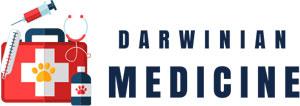My impression is that a fairly substantial number of people, many of whom are vegans or vegetarians, are of the belief that animal source foods (ASF) – beef, eggs, fish, and the like – are easily replaceable. Legumes and certain types of dietary supplements (e.g., vitamin B12 capsules) are held in high esteem, sometimes so high as to be thought of as representing a satisfactory or even healthier alternative to ASF. This idea, which ties in with talks of the purported dangers of red meats and the recent marginalization of animal products in favor of plants, fails to account for the fact that the nutritional value of ASF is profound, extending far beyond crude estimates of protein and vitamin B12…

Why meat is an essential part of the human diet
Up until fairly recently in our evolutionary history, ASF were a critical component of human diets all over the world. No hunter-gatherers are vegan. At least no one that I’ve ever heard mention of. Actually, any naturally living human who’d for some reason stop eating ASF would be in major trouble, as ASF provide certain essential nutrients that plants don’t provide (or only provide very small quantities of), meaning that veganism in the absence of dietary supplementation would be expected to quickly lead to dietary deficiencies. This, coupled with the fact that it’s well established that ASF were largely responsible for supporting the evolutionary argumentation of the human brain, speaks to the critical importance of ASF for human health.
Very recently, I put up a post here on the site in which I drew attention to a newly published scientific paper on red meat entitled Should Dietary Guidelines Recommend Low Red Meat Intake?. It’s the best piece on the topic I’ve come across to date. One of the things that stood out to me about it was the authors’ concise outline of the many important nutrients that are found in ASF. As I see it, they hit the nail on the head with their summary, which I’ve included below…
Throughout human history, meat has delivered a wide range of valuable nutrients that are not always easily obtained (or obtainable) from plant materials (Williams, 2007; McAfee et al., 2010; Pereira & Vicente, 2013; Young et al., 2013; McNeill, 2014; Leroy et al., 2018b). A major asset of meat is of course its high protein value (Burd et al., 2019), with especially lysine, threonine, and methionine being in short supply in plant-derived diets. It brings in B vitamins (with vitamin B12 being restricted to animal sources only), vitamins A, D, and K2 (particularly via organ meats), and various minerals with iron, zinc, and selenium being of particular importance. Also, the long-chain omega-3 fatty acids EPA and DHA present in animal sources are only poorly obtained in vivo from α-linolenic acid conversion (Cholewski et al., 2018), making plants a suboptimal source. Despite being overlooked in most nutritional evaluations, meat also contains various bioactive components as taurine (Laidlaw et al., 1988), creatine (Rae et al., 2003; Benton & Donohoe, 2011), carnosine (Everaert et al., 2011), as well as conjugated linoleic acid, carnitine, choline, ubiquinone, and glutathione (Williams, 2007). These components can offer important nutritional benefits, for instance with respect to the optimal development of cognitive functions.
Sufficient intake of animal products is therefore particularly advisable for population groups with enhanced nutritional needs and is helpful to offer nutritional robustness during various stages of life. As such, it contributes to the physical and cognitive development of infants and children (Neumann et al., 2007; Hulett et al., 2014; Tang & Krebs, 2014; Cofnas, 2019) and prevents deficiencies in young females (Fayet et al., 2014; Hall et al., 2017). In the elderly, sufficient meat intake can prevent or improve malnutrition and sarcopenia, also improving health-related quality of life (Pannemans et al., 1998; Shibata, 2001; Phillips, 2012; Rondanelli et al., 2015; Torres et al., 2017).
One of the things I really like about the review is that the authors go far beyond gross protein evaluations (which are unfortunately often all that’s considered in discussions concerning protein consumption as it relates to veganism), in that they get into the smaller constituents of meat, such as creatine, which may play a particularly important role up in all of this and could help account for “red meat cravings”, in that its presence in beef, venison, and the like may help explain why many people, including myself, feel the occasional need to eat such foods.
If you’re still not convinced that ASF are important, you should check out the next section of the paper, in which the authors – Frédéric Leroy & Nathan Cofnas – get into the scientific data linking a low intake of animal source foods with decreased nutritional robustness.
The excellent summary above highlights something very important, and that is that ASF are not easily replaced. Actually, one might go as far as to say that they are irreplaceable. To try to piece together a satisfactory alternative to ASF by assembling a bunch of different vitamin pills and other nutritional products is a bit like replacing real breast milk with an artificial milk-like concoction manufactured in a lab, in that the outcome is not going to be as natural or balanced as what nature provides. This idea is reinforced by the fact that there’s a delicate synchrony to living things, with different substrates and nutrients acting as part of a larger network.
It’s important to distinguish between what’s survivable and what’s optimal
The fact that some contemporary humans eat little or no meat shows that it’s perfectly possible to survive on a vegan diet, at least in this day and age, in which nutrients such as vitamin B12 are available in pill form. Some even claim to thrive on such a regime, passionately sharing the results and fitness gains they’ve made whilst on the herbivorous path.
This does not necessarily mean that it’s the ideal way to go though. It might be that the individuals who say they do well on a meat-scarce diet would have achieved even better results with their training or been even healthier if they’d consumed significant amounts of certain types of ASF. From a scientific point of view, scattered anecdotal accounts don’t really account for much.
To really get a grasp on what constitutes necessity or ideality, thorough evolutionary and nutritional analyses have to be conducted, and this respect, vegan diets clearly come up short.
Final words
My intention with this short article is not to bash veganism or the individuals who feel they’ve benefitted from entering that nutritional path, but rather to highlight that it’s a risky path to take. Not just because meat has been an important part of the human diet for many millions of years and is a good source of many nutrients, but also because there are a number of problems associated with ingesting plenty of isolated nutrients in the form of dietary supplements (e.g., issues related to nutrient absorption and balance) and/or a lot of high-protein plant foods, such as soy beans, which have a protein structure that differs from that of the foods we’re evolutionarily conditioned to eating.
My impression from talking to and observing vegans and vegetarians and seeing how trendy it’s become to “ditch the meat” is that a lot of people are unaware of these dangers, and as a result, have or could put themselves at a risk that they would not have accepted had they been better informed.
Finally, I think it’s important to point out that I’m by no means opposed to eating a lot of plants. Actually, I eat mostly plants myself. What I’m very skeptical of though, is to eat exclusively plant-based foods. I think it’s wise to include a moderate amount of some type of high-quality, minimally processed animal source food in most every major meal, as it would be expected to promote satiety, mental fitness, and musculoskeletal robusticity, among other things.
